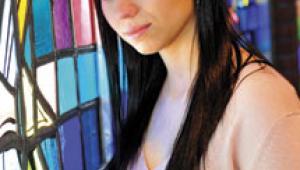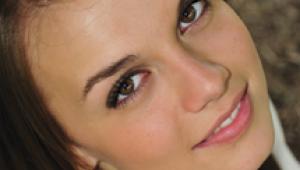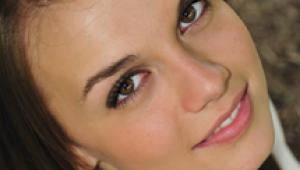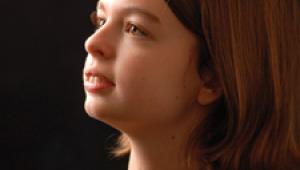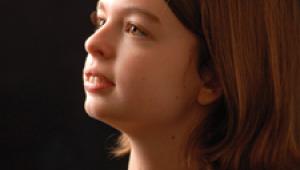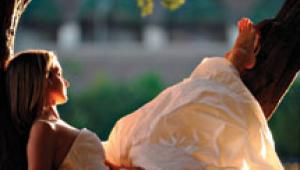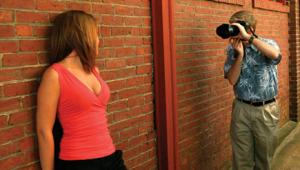The Classical Portrait Still Commands Respect
And Some Pros Are Even Still Using Film!
There are portrait photographers out there who command high fees who have clients waiting months for their sessions. They don't look at proofs immediately, but usually wait at least a week for a viewing. Then when the order is placed, it may be six to eight weeks or longer before the prints are ready. And get this--the photographer may be using film! How can this be? Let's examine the details behind this.
 |
 |
||
|
|||
First, let's look at the heavily altered digital portrait. Who wants
this? Maybe a high school senior, perhaps a young family, or possibly the folks
who've grown up on "mall photography" with a different gimmick
each month. But do you think an executive with a substantial income would want
this as a legacy of his family? Probably not. He or she will probably opt for
something more classical. For the same reason they wear Dockers and Brooks Brothers,
they will want a photographer who can create a piece that they can proudly display
over their mantle. A gold leaf frame and picture light will complete the presentation.
Riding barefoot on a spaceship over the moon? I don't think so.
So there are photographers out there who are wise enough to cater to this market.
Many do nothing but classic studio work. Want an outdoor portrait on top of
the mountain? Go somewhere else. A beach portrait at sunset? Forget it.
 |
|
|
I quote from one studio's website: "Charis Fine Portrait Studio
has been creating elegant portraits to grace the walls of homes in museum-like
quality for the past 50 years. Let us create a portrait of a lifetime for you.
The work of Phillip Stewart Charis has been compared to that of painters such
as Rembrandt, Van Dyke, Joshua Reynolds, and Sargent, due mainly to fine chiaroscuro
lighting and elegance of poses and expression."
How does that sound to you? Would you expect to get the finished prints in an
hour? Would you expect them to be inexpensive? Would you expect 50 percent off
the session fee if you called within 48 hours? I'm sure you can see the
value of a well-executed classic portrait created by a portrait specialist and
the appeal it would have to many.
Now let's go behind the product
itself to see how it is created. Since the goal of many well-known portrait
artists is to produce a portrait as close to life size as possible, image quality
is of utmost importance. How many megapixels are needed? Do we use a medium
format camera with a digital back?
Surprise--many well-known portrait artists use film! The technology is
already there, the films of today are superb, and it's the way they've
been doing things for many years. Not only that, but many clients seeking a
quality large portrait are still somewhat leery of digital quality. A medium
or large format camera with film and studio-controlled lighting is a recipe
for high quality. Many of the resulting prints are made by hand and canvas mounted,
creating a rich look that never goes out of style or will look hokey in a few
years.
How about instant results? In truth, people expect custom items of value to
take time to be created. If you were paying thousands of dollars for a portrait
and one photographer told you it would take 48 hours and the other six weeks,
which would you perceive to have the greater value? And while we're on
the subject of perceived value, let's say photographer A said, "Choose
from my wide selection of frames or buy one somewhere else." While photographer
B said, "We only offer two frame styles that we have specially made for
us to compliment our classic style, which one would you prefer?" Which
photographer would you entrust your framing needs to?
This might seem a bit off the subject, but even if you sell little 4x6s at art
shows, the concept of perceived value is
very important!
There are some photographers of the classic style I've come to appreciate
over the years. Portraitist Tim Kelly of Florida attracts clients from throughout
the US with his classic portrait style. Kelly, whom I've profiled in these
pages before, uses the latest digital technology to produce superb images that
are usually canvas mounted and often worked on with oils by his artist to create
a beautiful, three-dimensional look. Bradford Rowley of California produces
masterful oiled canvases, but prefers to shoot with film. These photographers
are very highly paid for their efforts.
While most of us have our feet firmly planted in the digital world and are caught
up in the speed and amazing imagery we can create, I believe there will continue
to be a market for high-quality classic portraiture. Using film or digital as
a starting point doesn't really matter as long as you can get the quality
you desire. And don't worry about speeding things up, because, as always,
quality takes time.
 |
|
|
A Classic Product From New
Technology
Knowing how important the classic portrait style is to some of our better clients,
my studio has developed a new product that merges the classic style with new
technologies. We call it our "Heirloom Portrait" and in our description
of it we discuss its timeless appeal, classic style, and archival image quality.
Here's how the portrait is created. I take the images with a digital camera,
currently a Fujifilm FinePix S2 Pro. After editing, the images are converted
to black and white. We project the images for our clients to help choose the
correct size.
After the client chooses their favorite images, we open them in Photoshop. The
images are completely retouched, skin tones are softened, stray hair is removed,
and any dodging and burning we deem necessary is done. We also do a little minor
"body sculpting" if needed to make people appear slimmer.
When we're happy with the images, they are sent to my lab (www.lustrecolor.com)
for printing. The prints are made on Epson matte paper with the archival ink
set. When the prints are returned, they are matted and framed. We give them
a choice of two frames that we have chosen that matches the art work. We always
tell clients the framing should be chosen to compliment the art, not their décor.
Their décor may change--the photo won't. And because of the
amount of time, skill, and materials used, we charge a premium for this product.
